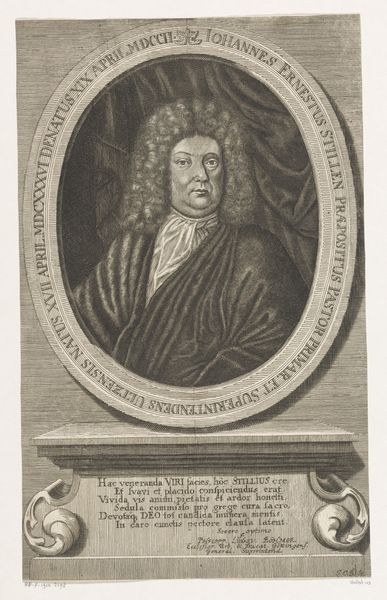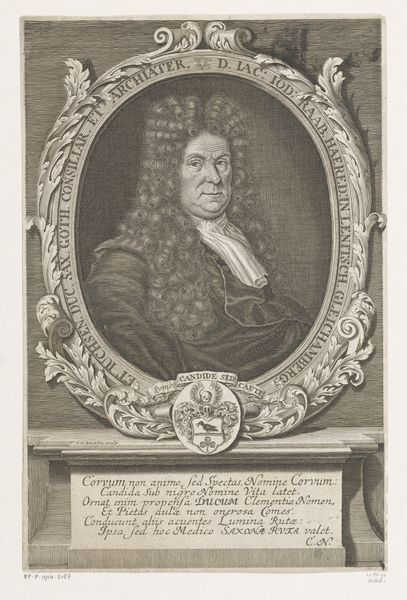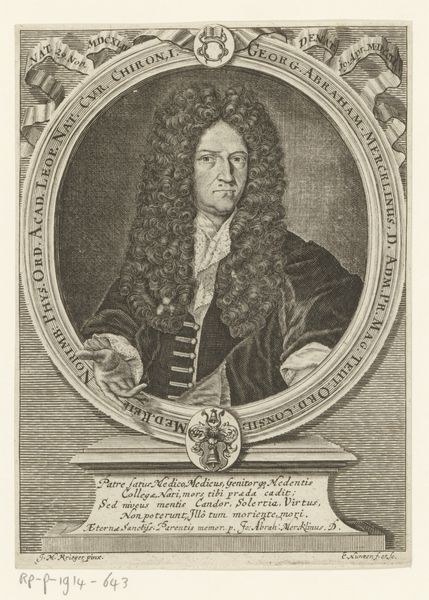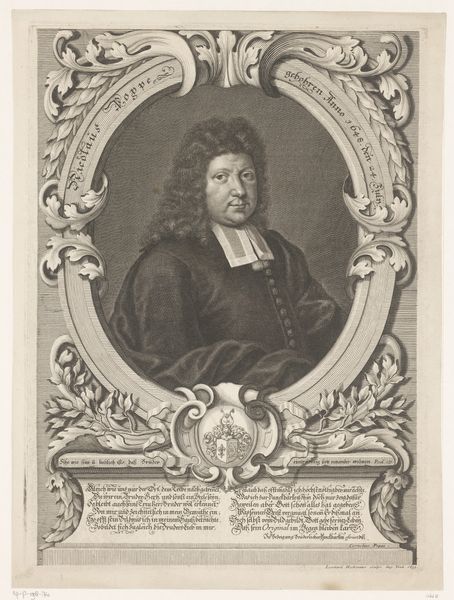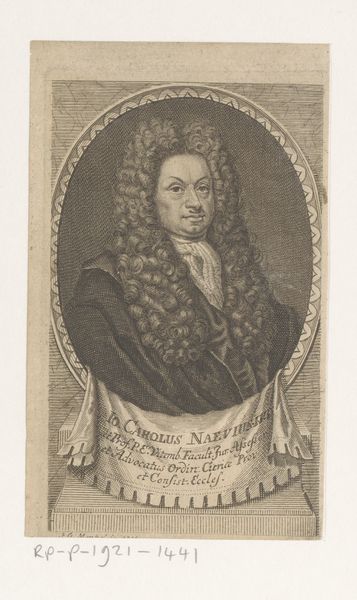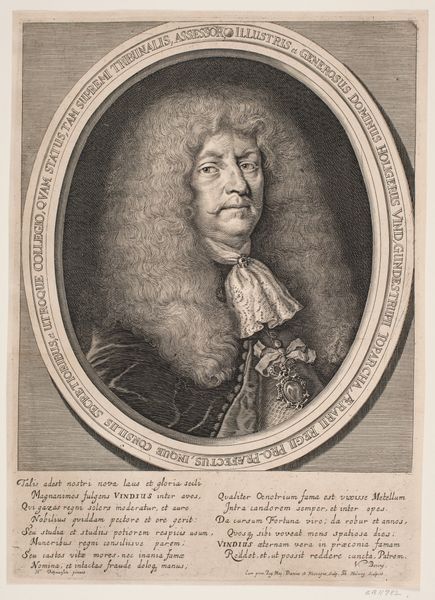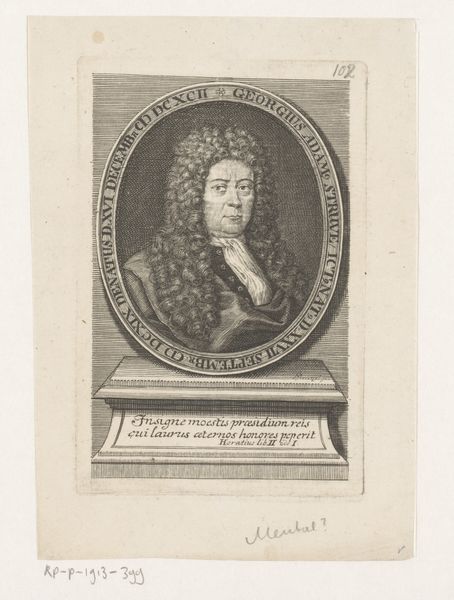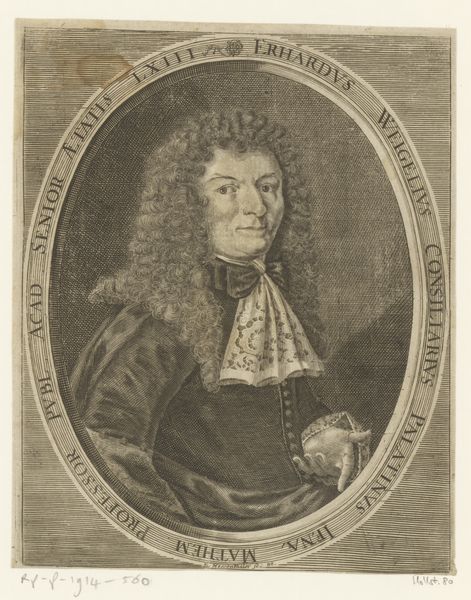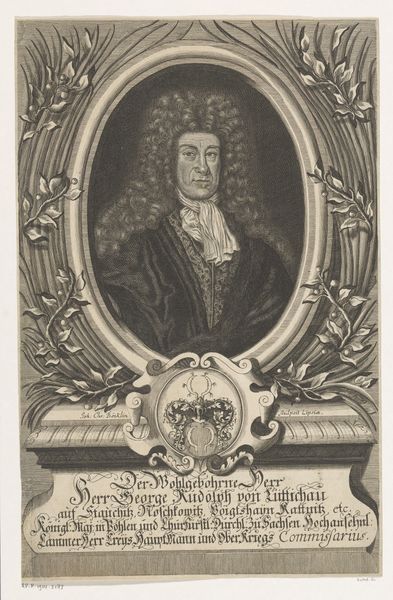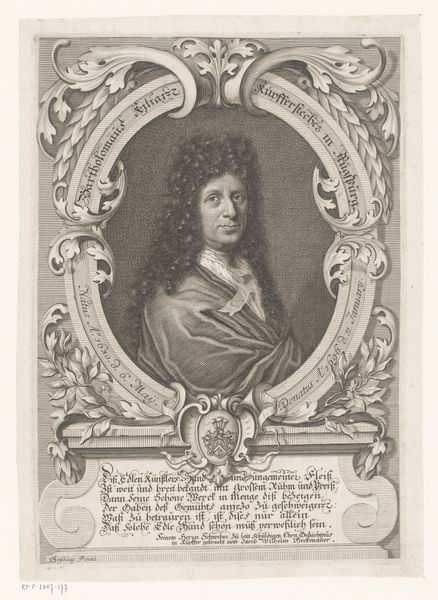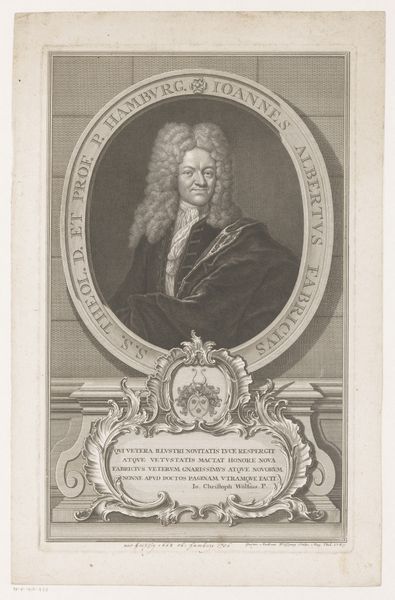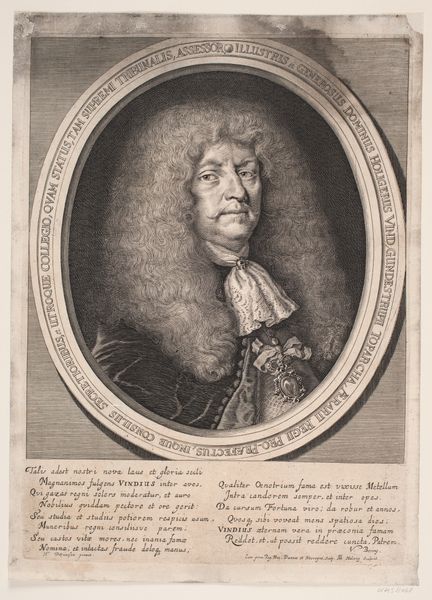
engraving
#
portrait
#
baroque
#
old engraving style
#
history-painting
#
engraving
Dimensions: height 195 mm, width 150 mm
Copyright: Rijks Museum: Open Domain
Curator: Let's turn our attention to this intriguing engraving titled "Portret van Georg Wende," placing us somewhere between 1665 and 1721. It depicts Christian Romstet, etched with meticulous detail. Editor: My goodness, what a wig! It’s practically a character unto itself. Seriously though, the sheer formality of the pose and presentation, there's a real sense of… well, controlled power. Like a stage prop in a serious drama. Curator: Exactly! That wig, and indeed everything about this Baroque portrait, speaks volumes about status and intellectual authority during that era. Romstet, given the Latin inscriptions and his attire, was a figure of significant standing, likely within academic circles. Editor: You know, the details in this print are just amazing - look at the textures on his robe and how they contrast to the smooth round oval encompassing the portrait itself! But you are right about the formality, this is less about the "man" Christian and more about an idealized idea of civic importance! Curator: Baroque portraiture, and certainly engravings like these, served to cement and broadcast such social standing. Engravings in particular allowed for widespread dissemination; it was a way of ensuring that Romstet's image and associated reputation were far-reaching. Consider, too, the use of Latin – a language reserved for the educated elite reinforcing who this work aimed to impress and influence. Editor: It’s funny, though. Seeing it today, removed from its original context, the effect is somewhat… theatrical? The trappings of power feel almost performative to me. I almost think he doesn't know who to be without all these 'things'! Does this make any sense? Curator: It does! Historians often wrestle with the staged nature of portraits, how much of the 'real' person we are seeing, and how much is constructed to convey a certain message. That tension, between authentic representation and calculated presentation, is precisely what makes such portraits endlessly fascinating! The way public images were constructed and interpreted can tell us so much. Editor: Well, from my angle, beyond the social history or power display of it all, is still a masterfully produced piece of art. All in those precise lines; still communicating and provoking across the ages! Curator: I agree, this isn't just a portrait of a man, but also a window into a specific historical context, into societal values, and a specific era. An object that transcends its subject.
Comments
No comments
Be the first to comment and join the conversation on the ultimate creative platform.
